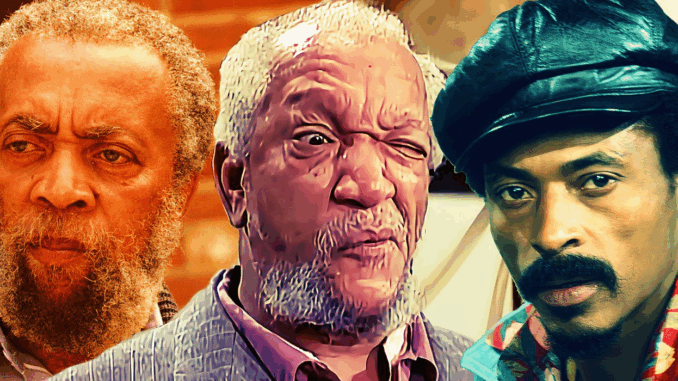
as stuck in his ways, a man of the past who saw little need to change. Lamont, meanwhile, was a modern, young Black man who desperately wanted to move forward, to escape the junkyard and build a better life for himself. This generational divide was the show’s engine.
This kind of raw, often dysfunctional family dynamic was a new frontier for Black television. While The Cosby Show would later present a more unified, aspirational Black family, Sanford and Son was a precursor that showed a different truth: that even in loving families, there are disagreements, rivalries, and moments of utter exasperation. The show proved that the drama and comedy of everyday life were more than enough to sustain a series. The writing never shied away from the characters’ flaws. Lamont was often frustrated and exasperated, while Fred was a stubborn old man who drove everyone crazy. Their relationship was a mirror of real-life family tensions, which made the show both funnier and more poignant.
The Norman Lear “Trojan Horse” and Social Commentary
As a Norman Lear production, Sanford and Son was part of a larger revolution in television that used comedy as a tool for social commentary. Lear’s style, often described as a “Trojan Horse,” was to pack serious themes into a comedic shell. While All in the Family tackled racism and bigotry head-on with Archie Bunker, Sanford and Son did so with a subtler, but no less effective, touch. The show didn’t just use racism as a plot point; it was baked into the very fabric of the humor. Fred’s constant jibes at his neighbor, Julio, or his apathetic view of social change were a reflection of a real-world perspective.
The writers of Sanford and Son were not afraid to use racial language or to confront stereotypes, but they did so to expose them. For instance, Fred’s relentless insults to his sister-in-law, Aunt Esther, were a comedic battle of wills, but they also showed the complexity of family relationships and the power of humor in defusing tension. By presenting a character who was flawed in every way, the show allowed audiences to laugh at him while also reflecting on the biases he held. This kind of nuanced social commentary was unprecedented for a Black sitcom. It paved the way for future shows to address serious issues without sacrificing their comedic heart.
The Lasting Legacy on Black Television
The success of Sanford and Son was a game-changer. Its massive ratings proved that a show with an all-Black cast and a distinctly Black perspective could be a mainstream hit. This success directly opened the door for other groundbreaking shows like Good Times, which delved into the poverty of an inner-city family, and The Jeffersons, a spin-off of All in the Family that explored the comedic side of upward mobility. These shows, and countless others that followed, were able to exist because Sanford and Son had shown a new way forward.
The show’s legacy can be seen today in comedies that prioritize authentic voices and a grounded, community-specific perspective. Shows like Atlanta, Insecure, and black-ish all owe a debt to the writing of Sanford and Son. They, too, are unafraid to explore the complexities of race, class, and family through a lens of humor that is both raw and honest. Sanford and Son didn’t just make audiences laugh; it gave a new generation of writers the permission to be real, to tell stories from their own lives, and to show the world that the Black experience was not a monolith, but a rich, complex, and hilarious tapestry.
